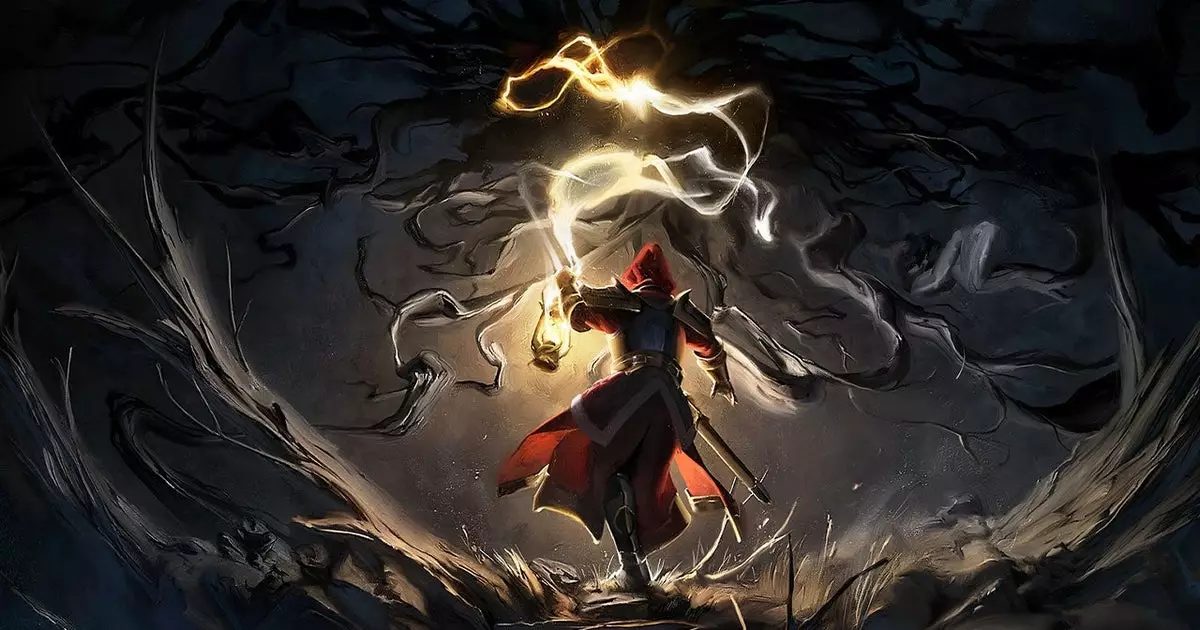When first introduced to *Mandragora: Whispers of the Witch Tree*, initial impressions were mix of apprehension and curiosity. This new venture attempted to carve its niche within the crowded dark fantasy genre, reminiscent of games like *Castlevania* and even *Trine*. However, despite its glossy exterior and a roster of RPG staples, I feared it may succumb to the pitfalls of mediocrity. Yet, drawing from an intricate web of storytelling, compelling characters, and immersive gameplay, it transcends mere genre imitation to deliver an experience that feels both fresh and exhilarating.
An Apocalyptic Canvas
Set against the backdrop of an apocalyptic realm, *Mandragora* presents a world overshadowed by a menacing King Priest who maintains a tenuous grip over the hauntingly atmospheric Crimson City. Here, the narrative thickens as you assume the role of an inquisitor embroiled in a morally gray struggle. The King Priest’s tyrannical rule extends to the torturous persecution of witches, invoking reminiscent themes of oppression and rebellion that echo through the annals of dark fantasy lore.
What sets *Mandragora* apart is its ability to weave rich storytelling within its RPG framework. Players are thrust into conflicts where choices resonate emotionally, as you grapple with the consequences of mercy and judgment. The decision to intervene on behalf of a tortured witch serves as a catalyst, igniting a journey laden with intrigue and complexity. The haunting whispers that progressively invade your mind propel this narrative forward, creating an engaging duality between the protagonist’s ambitions and the overarching darkness of the game world.
A Visual Feast and Enigmatic Characters
Visually, *Mandragora* offers an arresting aesthetic, with character portraits that evoke a sense of ethereal possession. While some may find them unsettling, I deem these visual choices as a brilliant stylistic element. They breathe life into the game’s dark atmosphere, inviting players to immerse themselves fully in its unsettling charm. The world is further enriched by compelling NPCs, whose conversations serve not merely as filler but as vehicles that deepen the lore and context surrounding the player’s actions.
Within the confines of the Crimson City, you engage with various inquisitors and delight in the intricacies of a densely populated world. The succulent dialogues and quirky character traits exemplify a tremendous attention to detail that resonates with seasoned gamers who appreciate narrative depth. Each interaction enhances the feeling of agency, making every encounter feel purposeful and rewarding.
Dynamic Gameplay Mechanics
Transitioning from narrative to mechanics, *Mandragora* expertly marries elements of action-RPG gameplay with depth and strategy. Encounters are fast-paced, with an engaging reliance on stamina management and evasive maneuvers that keep players on their toes. Combat unfolds dynamically, empowering players to forge their own style through customizable abilities and gear. The action seamlessly melds classic elements from titles like *Castlevania* while incorporating modern mechanics akin to *Path of Exile 2*.
However, while the core of the gameplay is captivating, the animation and control responsiveness could benefit from refinement. At times, they feel stilted, slightly hindering the otherwise powerful immersion experience. Nevertheless, the labyrinthine design of the game levels compensates for these shortcomings, as players uncover secrets nestled within the environment, pulling them deeper into the heart of *Mandragora*.
Storytelling Meets Gameplay: A Cohesive Experience
As one delves deeper into the gameplay, it becomes apparent that *Mandragora* aims for a distinct consistency that harmonizes storytelling with interactive elements. The narrative doesn’t merely serve as an afterthought but is intricately entwined with the gameplay loop, as players experience character development through diverse interactions. The recurrent theme of choice and consequence permeates gameplay, as even mundane actions result in significant narrative developments.
One standout moment arises when players smash crates meant for a merchant, provoking a humorous yet poignant response that showcases the game’s knack for character-driven storytelling. Moments like these add character and depth, ensuring players feel connected to their choices and the broader world they navigate.
In an era where many games struggle to balance engaging storylines with mechanical prowess, *Mandragora* appears to rise above. By promising a journey filled with over 40 hours of immersive content, it invites players to embrace its darkness while igniting their sense of adventure. With its compelling blend of narrative depth, clever gameplay mechanics, and striking visuals, *Mandragora* could be on the cusp of carving out a remarkable identity in the crowded gaming landscape.


Leave a Reply